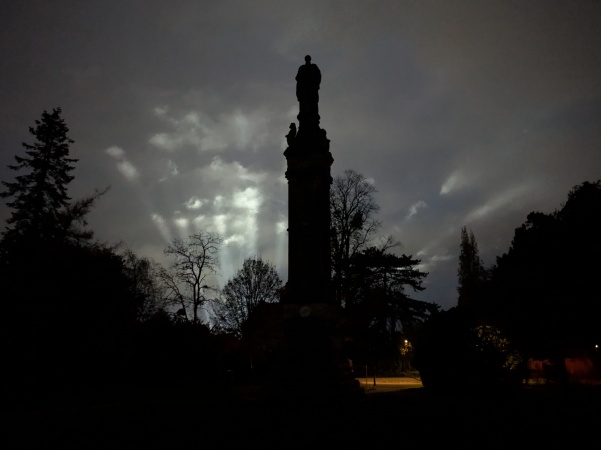
One of the stranger sights was the glow of lights behind the Albert Monument, like a scene from a science-fiction film. These were laser tests ahead of the firework display at Dalton Barracks.
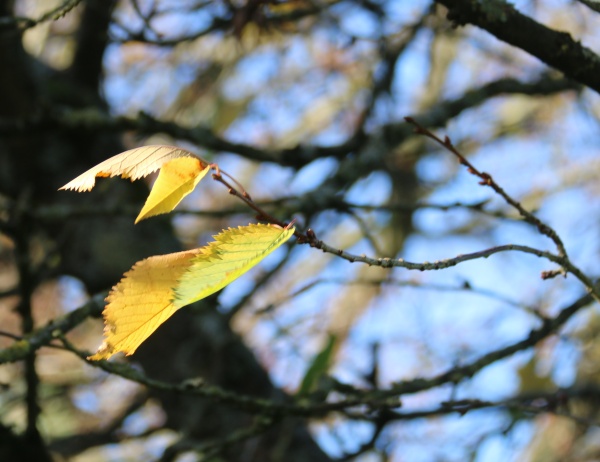
November began mild, but by the end of the first week most deciduous trees had already lost their leaves, helped along by shorter days, wind and rain. Some trees were bare, others had a few leaves left.
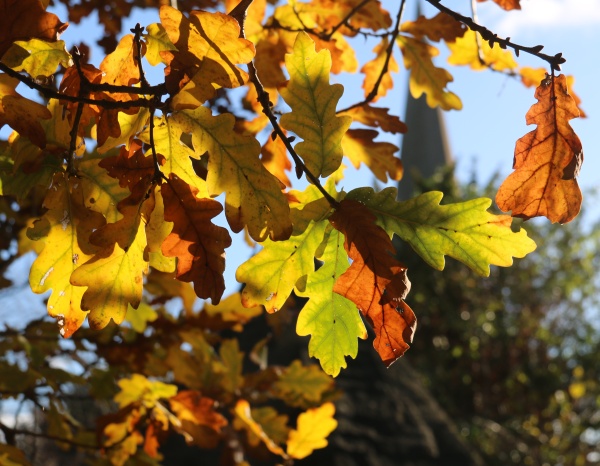
The noble oaks however still held their leaves right up to the end of November, after several frosts.
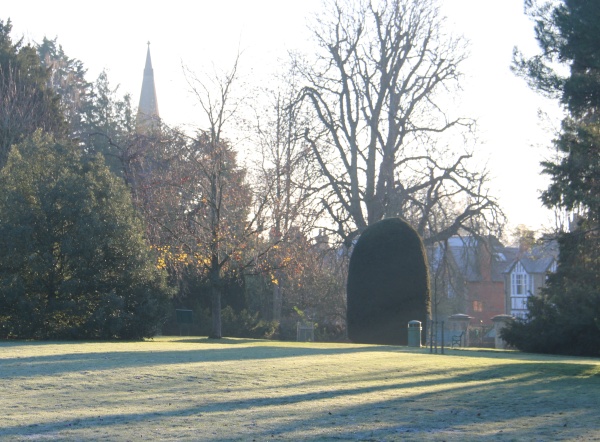
There were several frosty mornings after the middle of the month.
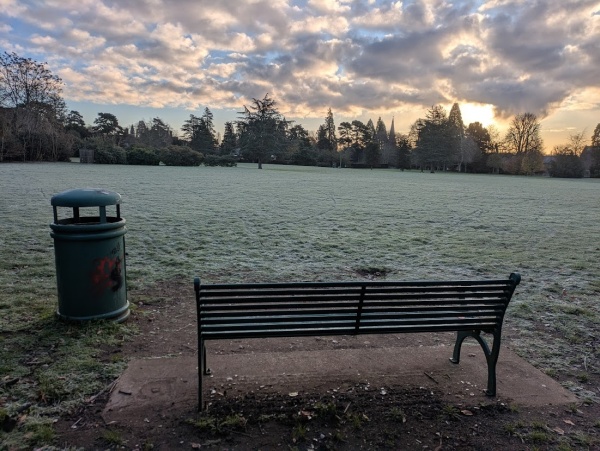
The sun rise on a frosty day is beautiful whether or not anybody is there to enjoy it.
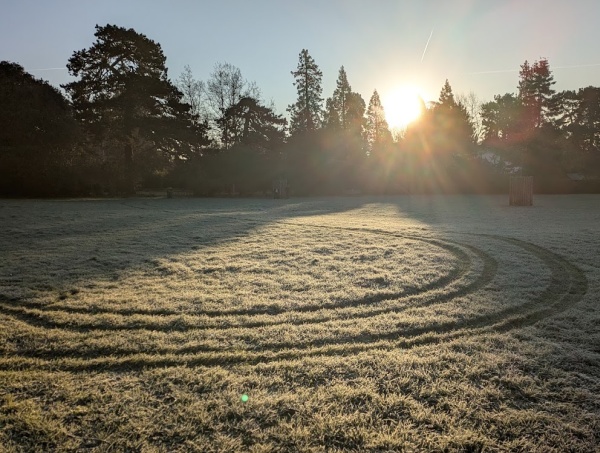
A mini-tractor makes its early-morning rounds, emptying bins, leaving tracks.
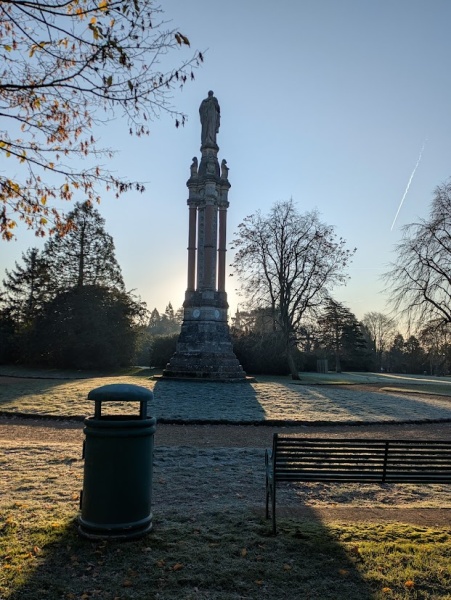
The low winter sun casts long shadows from the Albert Monument and from the bare trees.
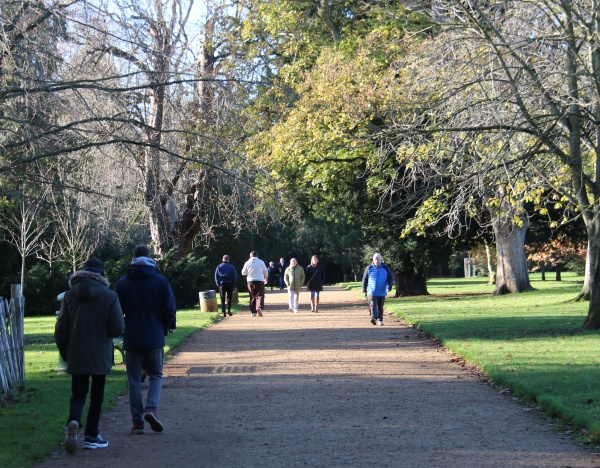
After a frosty night, there is often a sunny day. Albert Park is a popular walk all year round. The November sun attracts not just the dog walkers and joggers, but walkers without dogs making the most of the semicircle of paths.

With the branches bare, birds are easier to spot as they sing or flit from tree to tree.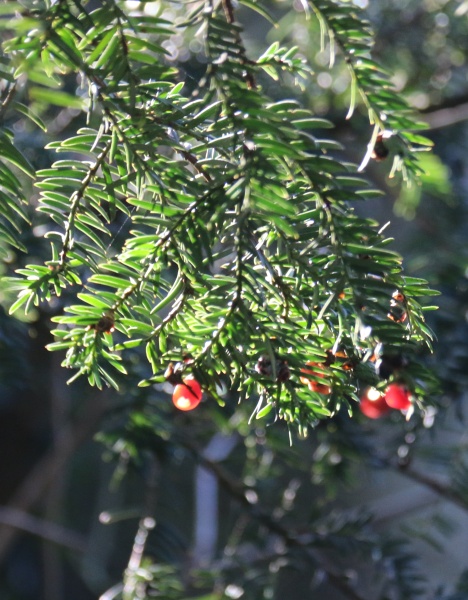
Holly berries and the yew cups stand out after other colours fade.
Abingdon Lights Up for Christmas
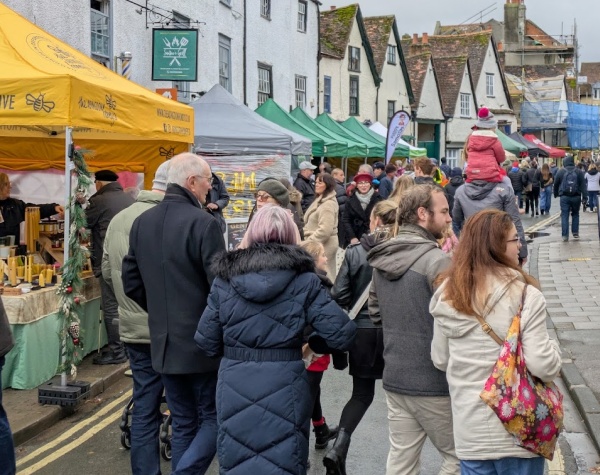
Traders and community groups welcomed shoppers and visitors to Abingdon’s annual Christmas Extravaganza, which brought together entertainment, a parade, a market, and the Christmas lights switch-on.
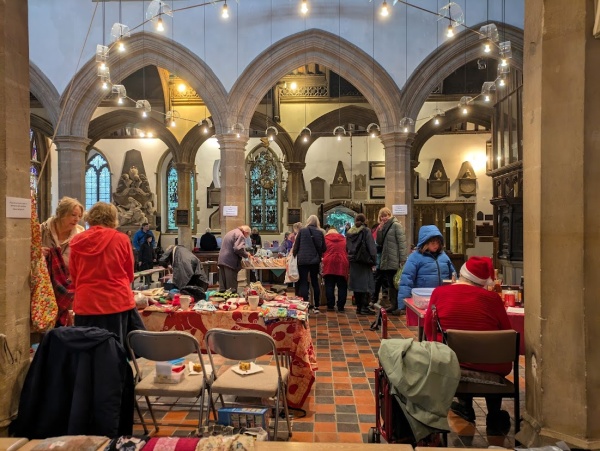
The day began wet — a good excuse to visit somewhere indoors, such as the St Helen’s Christmas Fair, also taking place during the morning.
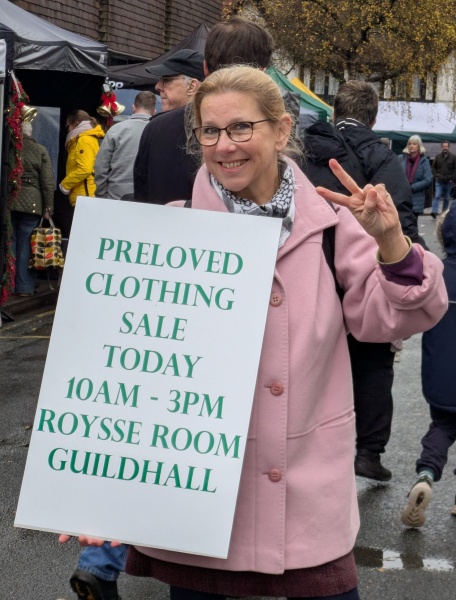
Or the Preloved clothes sale in the Guildhall, thanks to One-Planet Abingdon.
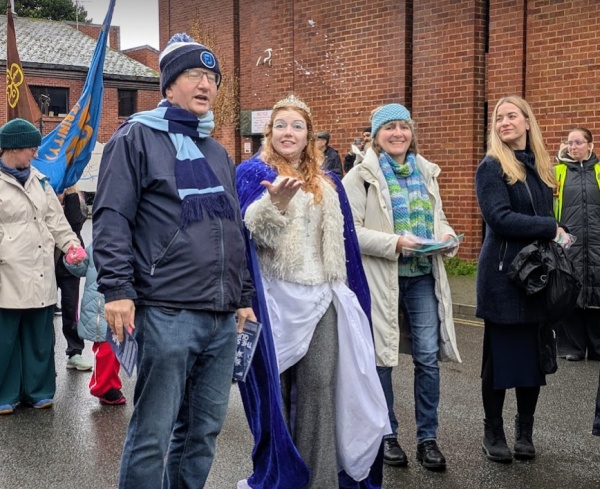
By the time the parade was ready to set off at 12 noon the rain had stopped. (These are members of Abingdon Drama Club who will be performing The Snow Queen in January.)
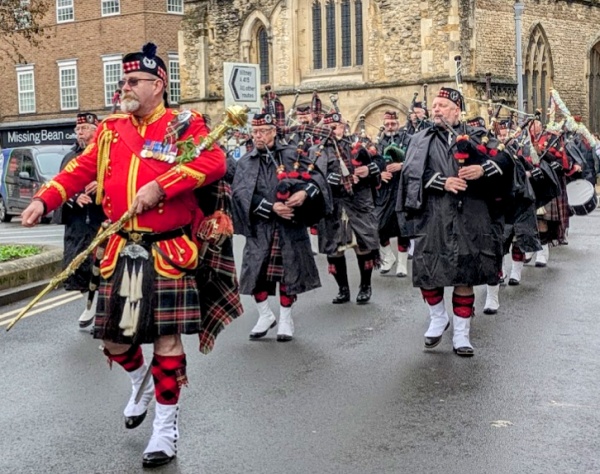
The parade was led by the Oxford Caledonian Pipers, followed by Amanda Alder’s Dance Academy; Guides and Brownies; the cast of Beauty and the Beast from the Cornerstone in Didcot;
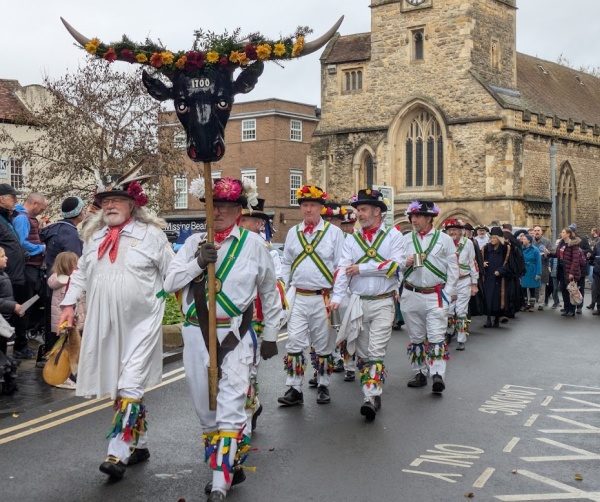
the Abingdon Traditional Morris Dancers;
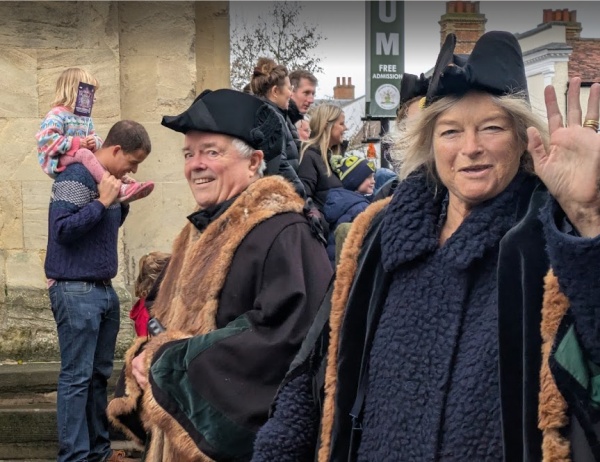
Abingdon Town Council;
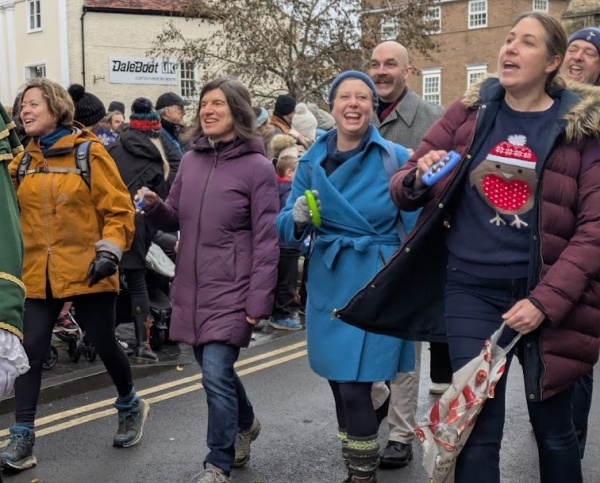
Abingdon Music Centre;
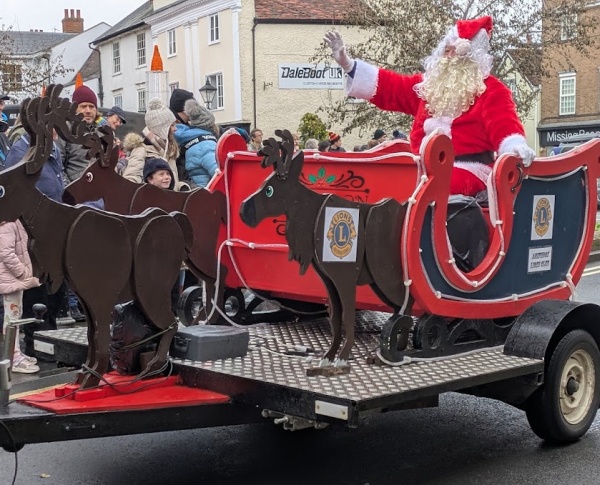
and finally Father Christmas, brought to us by the Abingdon Lions. He had a grotto outside Poundland for the rest of the day.
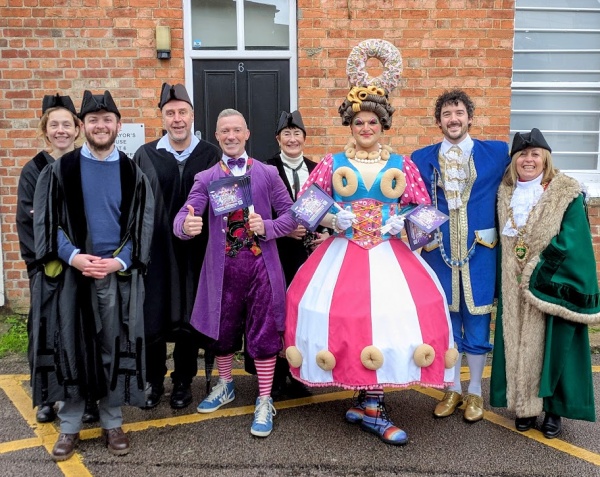
The parade route was closed for about twenty minutes, and the parade participants ended up in the carpark behind Bury Street where I took this picture of members of the Beauty and the Beast cast with the Mayor and Town Councillors.

Bath Street was closed for the craft market, with performances running there throughout the day, as well as on the Market Place.

The final act on the Market Place was Courtney Reddy performing as Avril Lavigne.
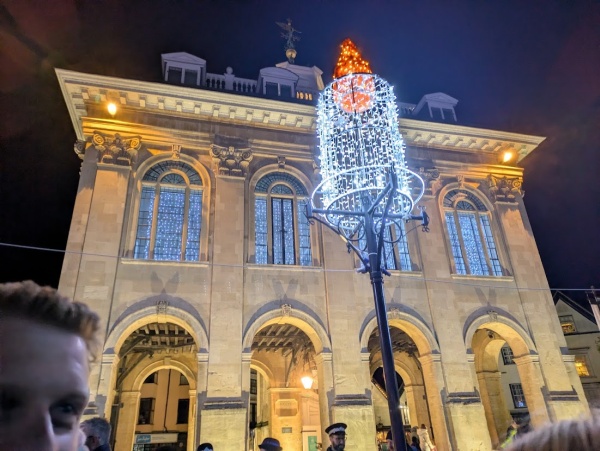
Then Duncan Brown led the traditional countdown from 10 to 0, the Mayor pressed the red button, and the Christmas lights came on instantly.
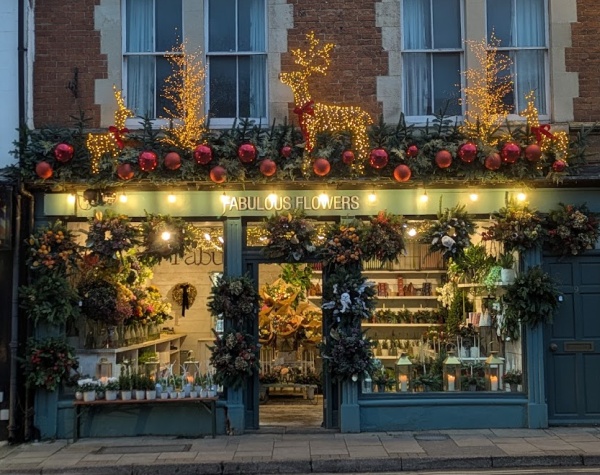
There was a prize for the most festive market stall. There was no prize for the most festive shop front but plenty of good competition. This is Fabulous Flowers.
The Extravaganza was organised by the Abingdon Events Partnership with sponsorship from lots of local businesses including the Bury Street precinct, Fairacres Retail Park, Missing Bean cafe and Wenn Townsend accountants.
Here is a video of the Parade and the Oxford Caledonian Pipe Band:
Here are the lights being switched on:
Abingdon Community Heroes
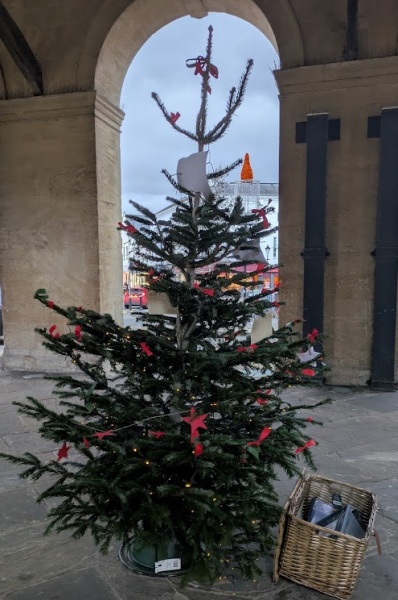
A Christmas tree has appeared under the County Hall Museum, decorated with a large QR code. Scanning it takes you to the Abingdon Community Heroes — a project run by The Abingdon Bridge that celebrates people nominated for their kindness, resilience, and dedication to making Abingdon a better place.
Those featured include Beth, Sienna, Nial, Donte, Matty, Ben, Philip, Rawda, Paul, and Darren. Some are young people who first came to The Abingdon Bridge for support and have since grown into leaders and mentors for others. Others work across the community: a member of staff at Oxfordshire Mind, the manager of the Foodbank at Christ Church, the Mayor of Abingdon, the chair of Abingdon Town Amateur Boxing Club (who has raised significant funds for The Abingdon Bridge over several years), and the founder of Wandering Minds, a peer-support group for adults with ADHD.
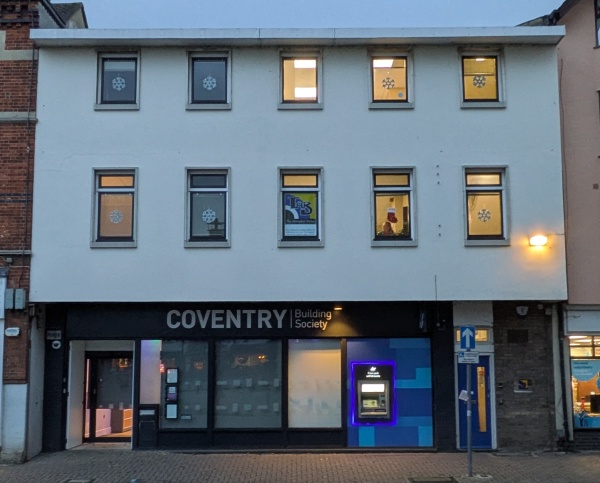
The Abingdon Bridge is a youth-wellbeing charity supporting young people aged 13–25. Their offices are in the old police station and in the building behind the County Hall, above the Coventry Building Society.
Gas Main Upgrade to Bring Two-Week Parking Rest on Wilsham Road

Some people have been puzzled by the traffic cones blocking off a stretch of Wilsham Road that’s usually used for free parking by people walking into town. One motorist asked me today what was happening, especially as the cones have been there for two or three weeks with no sign of work.
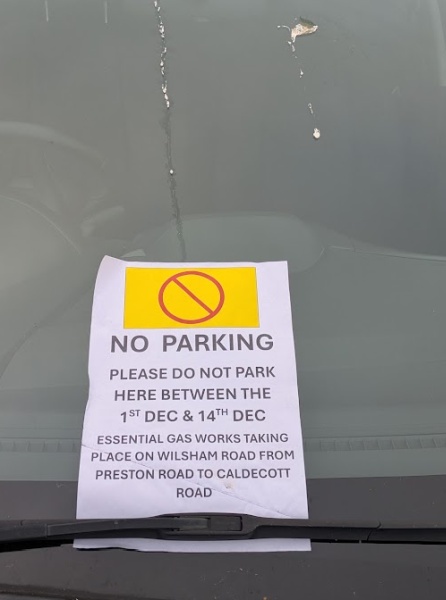
The answer is on the windscreens of a few cars that haven’t moved since the weekend. Notices say that essential gas works will take place from 1st to 14th December, and there will be no parking on Wilsham Road between Preston Road and Caldecott Road during that time.
These works are part of SGN’s ongoing programme to replace aging metal gas mains in Abingdon, something I first covered here in 2023. The old pipes are being replaced by plastic ones expected to last around 80 years. Presumably the new pipes will also allow the transition from natural gas to hydrogen, a project SGN are trying out in Fife, Scotland.